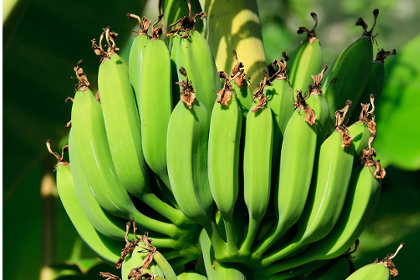
The Surprising Health Benefits of Unripe Banana, Papaya, and Mango
The idea that an unripe fruit might be healthier than a ripe one may seem seriously counterintuitive.
But certain fruits such as underripe bananas, papayas and mangoes, are high in fiber and they also contain higher amounts of digestive-resistant starch, both of which are important for optimal gut health.
July 4, 2016 | Source: Mercola.com | by Dr. Joseph Mercola
Are you getting enough fiber in your diet? If not, your health may suffer in more ways than one. A common sign your diet is lacking in fiber is constipation and irregular bowel movements, but that’s really just the tip of the iceberg.
Fiber-rich foods like vegetables promote optimal gut health by nourishing beneficial gut bacteria. Certain fruits are also high in fiber, including underripe bananas, papayas and mangoes.
These fruits have yet another feature that makes them interesting. Their nutritional content changes depending on their ripeness, and in their unripened state, they contain higher amounts of digestive-resistant starch, which is important for optimal gut health.1
The idea that an unripe fruit might be healthier than a ripe one may seem seriously counterintuitive.
The sugar content of a fruit is typically used as an indicator of quality — not because the sugars are in and of themselves necessarily an indicator of quality, but they’re typically associated with the plant’s mineral content. Hence, it can be used as a marker of quality.
To measure sugar content, a refractometer or so-called Brix meter is used. The most common Brix meters measure on a scale of 0 to 32 degrees Brix, and the sweeter the fruit, the higher the nutritional content is thought to be.
However, in the case of mango, its vitamin C content is actually much higher in the unripe fruit than in the ripened one. Vitamins and minerals are also not the sole reason for eating fruits though. Fiber is also important, and in some cases unripe fruit is a better option.
What’s so Great About Digestive-Resistant Starch?
Fiber is typically classified as either soluble or insoluble. However, from a health standpoint, the fermentability of the fiber is what’s really important. Digestive-resistant starches are low-viscous fibers that resist digestion in the small intestine and slowly ferment in your large intestine.2
Here, resistant starches act as prebiotics, feeding healthy bacteria. Due to their slow fermentation, they won’t make you gassy. They also add significant bulk to your stools, and help you maintain regular bowel movements.
Best of all, since they’re indigestible, resistant starches do not result in blood sugar spikes. In fact, research suggests resistant starches help improve insulin regulation, reducing your risk of insulin resistance.3,4,5,6
Besides underripe banana, papaya and mango, other foods high in resistant starch include white beans, lentils, seeds and products like potato starch, tapioca starch and brown rice flour.
(Interestingly, cooking a normally digestible starch such as potato or pasta and then cooling it in the refrigerator will alter the chemistry of the food, transforming more of it into resistant-type starch.7)
